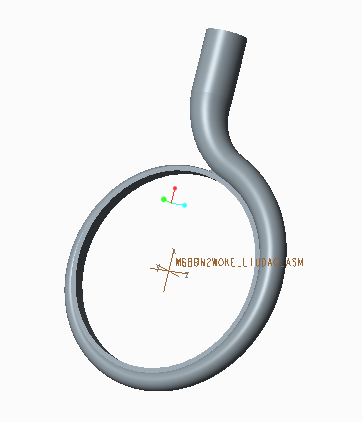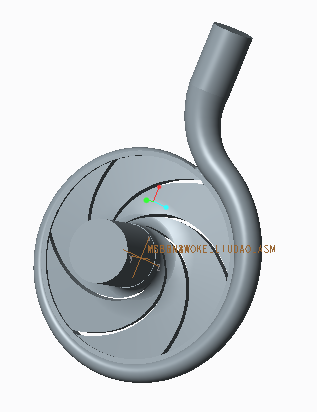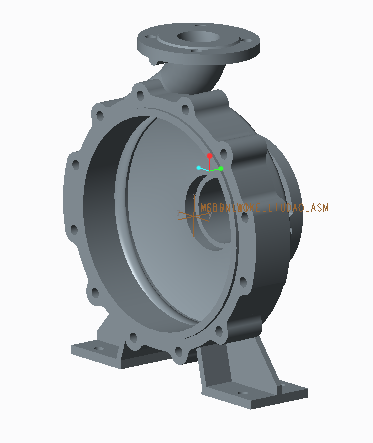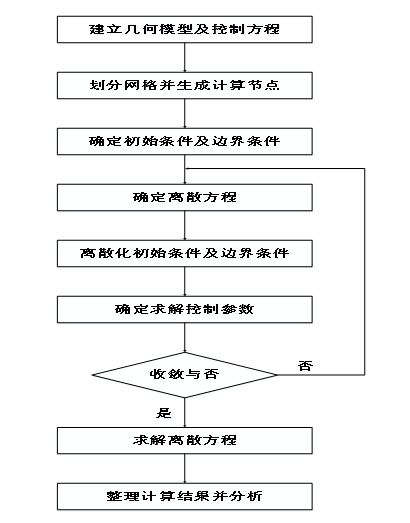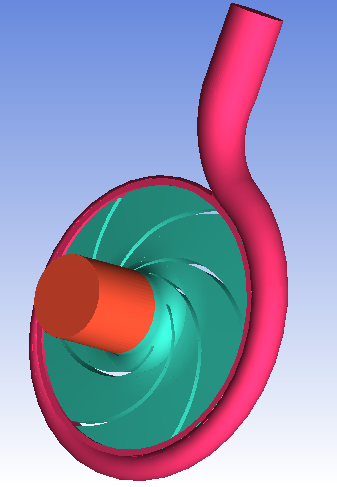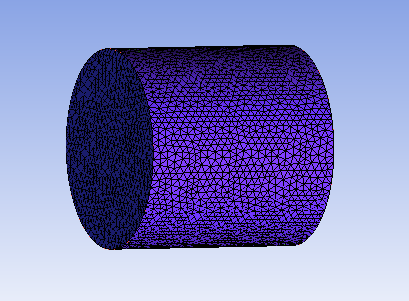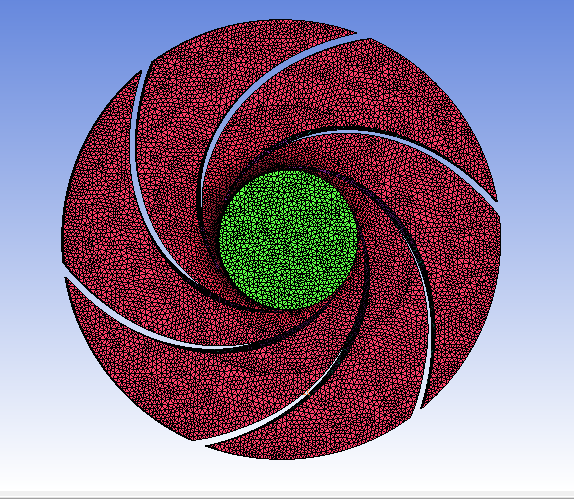离心泵结构振动与声辐射特性研究毕业论文
2020-04-12 14:13:49
摘 要
随着离心泵在生活中的使用越来越多,其对人们带来的影响也不容小视,不仅要考虑到离心泵运行中的效率等参数状态,更要考虑到其在工作中产生的结构振动情况以及造成的声辐射,这不仅会影响离心泵本身的工作状态,还会严重影响人们的舒适程度,研究离心泵的结构振动与声辐射情况并进行设计与优化很有必要,对此,本文进行了相应的研究。
本文是以IS100-65-135型单级单吸离心泵为研究对象,通过ANSYS、Virtual.Lab Acousitics等软件为研究平台,通过数值模拟、流固耦合、声学仿真等方法进行研究。
首先在建模阶段,由于ANSYS的建模能力不强,而且离心泵结构复杂,故使用建模能力强大的Creo3.0软件分别对离心泵的计算流体域和蜗壳结构进行建模,并将文件以STP格式导出,以便后续研究。
然后将离心泵的计算流体域模型导入ANSYSY ICEM CFD中进行网格的划分,并保存为cfx5格式的文件导入到CFX进行流场仿真模拟,将离心泵工作参数的模拟结果与实验结果进行比较,得到了稳态和瞬态下的速度矢量图和压力云图,对结果分析并得到了相应的结论。
第三以离心泵蜗壳结构为研究对象,使用ANSYS Workbench协同仿真平台中的ANSYS Modal对蜗壳结构分别进行自由状态下和额定工况下的模态分析,得到了振形分布图和固有频率,对结果进行了分析得到了在1000Hz左右蜗壳的振幅最大的结论,并提出了相关的建议。
随后在ANSYS Workbench中对蜗壳进行了流固耦合分析,取了叶轮转过隔舌过程中的6个时刻,分别得到了蜗壳相应的变形情况和应力分布,发现在叶轮正好经过隔舌时蜗壳最容易发生振动,因此在使用过程中要特别注意,在设计时也可以进行针对性的优化。
最后在Virtual.Lab Acousitics软件中对离心泵进行声学仿真。通过计算得到了泵的声压云图和声功率曲线,做了初步的研究分析。
关键词:离心泵 振动 声辐射 数值模拟 流固耦合
Abstract
With the increasing use of centrifugal pumps in our life,the impact of centrifugal pumps on people can not be underestimated. It is necessary to take into account not only the parameters such as the efficiency of the centrifugal pump during operation, but also the vibration of the structure and the acoustic radiation caused during its operation. This will not only affect the working status of the centrifugal pump itself, but also seriously affect people's comfort level. It is necessary to study the structural vibration and acoustic radiation of the centrifugal pump and to design and optimize it. For this reason, this paper has conducted corresponding research.
This paper takes IS100-65-135 type single-stage single-suction centrifugal pump as the research object, through ANSYS, Virtual.Lab Acousitics and other software as the research platform, through numerical simulation, fluid-solid interaction, acoustic simulation and other methods.
Firstly, in the modeling stage, because the modeling capability of ANSYS is not strong and the structure of the centrifugal pump is complex, the computational fluid domain and the volute structure of the centrifugal pump are modeled separately using Creo 3.0 software with powerful modeling capabilities. The file is exported in STP format for subsequent study.
Secondly the computational fluid domain model of the centrifugal pump was imported into ANSYSY ICEM CFD to divide the mesh, and the file which saved as cfx5 format was imported into CFX for flow field simulation. The simulation results of the centrifugal pump's operating parameters were compared with the experimental results. The steady-state and transient velocity vectors and pressure cloud diagrams were obtained. The results were analyzed and corresponding conclusions were obtained.
The third part takes the centrifugal pump volute structure as the research object, using ANSYS Modal in the ANSYS Workbench co-simulation platform to perform the modal analysis of the volute structure in the free state and the rated condition respectively, and the vibration shape distribution map and the natural frequency are obtained. The results were analyzed to obtain the maximum amplitude of the volute around 1000 Hz, and related suggestions were put forward.
Fourthly, the fluid-solid coupling analysis of the volute was performed in the ANSYS Workbench. Six moments in the rotation of the impeller through the volute tongue were taken. The corresponding deformation and stress distribution of the volute were obtained respectively. It was found that the impeller passed through the volute tongue. The volute is most likely to vibrate, so pay special attention to the use of the process, can also be targeted at the design of optimization.
Finally, the centrifugal pump was acoustically simulated in the Virtual.Lab Acousitics software. The sound pressure cloud diagram and sound power curve of the pump were calculated, and a preliminary research and analysis was performed.
Key words: Centrifugal pump, Vibration, Acoustic radiation, CFD, FSI,
目录
摘要 III
Abstract IV
第1章 绪论 1
1.1 引言 1
1.2 国内外现状分析 1
1.2.1内部流场数值模拟 1
1.2.2 流固耦合 2
1.2.3 振动与噪声 2
1.3 研究内容和技术路线 3
1.4 本章小结 4
第2章 离心泵模型的建立 5
2.1 三维建模软件creo3.0介绍 5
2.2 离心泵计算流体域模型的建立 5
2.3 离心泵蜗壳模型的建立 7
2.4 本章小结 8
第3章 离心泵流场的CFD仿真模拟 9
3.1 CFD的概述 9
3.2 CFX软件的介绍 10
3.3计算流体动力学的基本理论 10
3.3.1流体动力学的控制方程 10
3.3.2有限体积法的思想和求解方法 11
3.4 计算流体域的网格划分 11
3.4.1 ANSYS ICEM CFD网格划分软件介绍 11
3.4.2网格划分的方法 11
3.4.3 网格的划分 12
3.5离心泵计算流体域的稳态仿真模拟 14
3.5.1基本条件的设置 14
以上是毕业论文大纲或资料介绍,该课题完整毕业论文、开题报告、任务书、程序设计、图纸设计等资料请添加微信获取,微信号:bysjorg。
相关图片展示:
